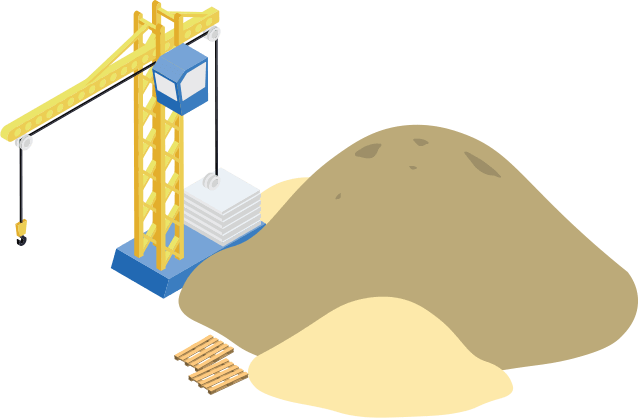You can avoid stepping in an awful lot of dog poo, if you are aware of this. There are “Marketing Fads” and there are “Marketing Fashions.”
Fashions good. Fads bad.
What’s the difference, and how do you tell?
And why is this such an important distinction?
Read on.
FASHIONS
A fashion is a more-or-less organic, more-or-less long-lasting trend in – well, in almost anything.
There are fashions in clothes, in architecture, in political ideology, in cars, foods, music, dance, business management methods – etc., etc. etc. etc.
And, of course, there are fashions in marketing.
I stress the “more-or-less organic” angle. It isn’t easy to get a durable trend going. Unless it satisfies some underlying desire or habit. To some degree, then, it becomes “just the way things are.”
For a while. For some years, women wore corsets, giving them artificially narrow waists. Woefully compressing and forcing their organs out of position.
Shudder. Eventually that fashion was gone.
Some day, the thought of driving a car yourself will be just as horrifying. Because all cars will be self-driving. Of course.
Some fashions get started by one person, usually a celebrity. They still must strike some chord, resonate with people, or they go nowhere and not for long.
It is the durability of a true fashion that makes it important to marketers. Strike-while-hot fads are great. If you can adapt rapidly to take advantage of them. And to get off them before you’re left with $5 million worth of hula hoops in your warehouse.
In ancient times, like the early 2000s, website menus could be horizontal across the top of the page, or vertical, usually down the left side. The occasional site would have a circular menu, or no menu, or something else. But it was mainly horizontal or vertical and in about equal numbers.
At some point, horizontal top menus began to dominate. Vertical menus are still common as secondary menus, such as categories of products. But by two or three years ago, nearly all of the most popular websites were using horizontal main menus.
Now that is a fashion. It is popular, it is accepted, and it isn’t likely to change any time soon. It didn’t and doesn’t have to be that way. In my opinion, horizontal menus deliver a better user experience, but if the market dictated vertical menus, that would be okay.
Maybe one day fashion will change, and we’ll get all vertical menus, or something we wouldn’t currently even imagine.
TECHNOLOGY
Website fashions or styles change, on the average, every 3 to 5 years. There are reasons for that.
One is technology. That is an important driver of fashion. And not just in websites or other technical areas. Think the invention of microfiber. The ability to produce high volume microfiber fabrics economically, led to several style trends especially beginning in the 1990s. And refinements in wind tunnel technology changed automobile styling forever.
If “the right way to do website menus” changes, there’s a good chance it will be because of technological advancement.
In websites, a great example was the introduction of what is called “media queries,” a technological breakthrough. This is what made it possible for a web page to adapt to the screen size and type of device it was being displayed on. That in turn led to the development of “Responsive Web Design” or RWD.
Before RWD became THE way to do websites, in the Jurassic Period 6 or 7 years ago, websites had to be designed for a particular size screen. The page couldn’t be too wide because most people were on, say, 800×600 monitors. Having to scroll left-right to read a page made a terrible user experience.
So you would have an image or pattern in the background. Then the wide blank spaces on either side of the page – when being viewed on a wide-screen monitor – didn’t look so awful.
Essentially that was a design fashion dictated by technology. Now, RWD is easy, so pages fill the full width of the screen. That in turn led to the rise of so-called “Hero” images – the screen-filling images you often see when arriving on the home page of a website. That is a current fashion in websites.
Technology made it easy. The high resulting visual impact made it a durable fashion.
Once, you had to build a separate website for mobile only. Cell phones had limited capabilities. Then smartphone web browsers became fully capable. RWD made it easy to detect and adjust the display to a phone screen. The mobile only design fashion disappeared.
One company, Duda Mobile, which became a billion-dollar company doing mobile websites for companies, saw that business collapse. Recently they completely reinvented themselves. There was no reason for mobile only websites, and in fact, Google heavily discourages them with their “mobile first” indexing (search ranking algorithm).
MARKETING FADS
It’s true, fads can also be driven, or at least enabled, by technology changes.
If we want to be charitable, the difference between a fad and a fashion is whether it really catches on.
Clearly, the number one distinction between a fad and a fashion is longevity.
I bet we’ve seen at least half a dozen website fads in the last 5 or 6 years. In fact, here’s six that come immediately to mind:
One-page websites
All video home pages
Flat design (no apparent 3-D depth to graphics)
Parallax scrolling (display shifts as you scroll down the page)
Websites dominated by infographics with animation effects
Hamburger menus on desktop (the three lines menu icon used on mobile)
There’s more I could name. Because there’s an incentive to inventing them – the possibility of getting rich.
They all have a few things in common. They very quickly became all the rage, and in a year or less, the bloom was off. They all still are used to some degree, but not nearly as much as when every new website was one-page, for example.
Each of these was, in themselves, not a bad idea. But they got applied to EVERY website when they only made sense for perhaps a small portion of sites. They all were being heavily pushed by website developers and marketing companies. They were the greatest thing since sliced bread, and hire us to do your websites because we can build your website using ______ (fill in blank with latest fad) and the other guys can’t.
And there is the key point. Fads have to be sold, and continue to be sold. Because there is no real organic marketing rationale behind them.
What makes a one-page website a good idea from a marketing standpoint?
Same question: When is LESS content a good marketing idea? When is it a good idea, to make it harder to find what you are looking for?
You can make a similar analysis of any other fad. They are propped up by hype. You can only stay up so long on caffeine.
The fads I mention above, definitely work from a marketing viewpoint. SOME of the time. Not most of the time. But anyone pushing a fad isn’t going to discriminate to that degree.
Contrast that to RWD, which was also the invention of one guy. It made, and continues to make sense for virtually every website. Technology made it easy. Now, you would have to go out of your way to build a website that doesn’t use RWD and isn’t mobile friendly.
WHICH IS IT?
How does this apply to you and your marketing?
The next time you are being sold something on the basis it is cool or the Next Big Thing.
Okay, that’s when, not how.
So WHEN you are being pitched – impressed with – or excited by – how cool or great something is, consider whether there is more than hype behind it.
What basic marketing principles does it make use of?
To produce better results, that is.
We are results oriented, right?
And you just might steer clear of the cow patties and the horse apples of the Latest Greatest Fad.









